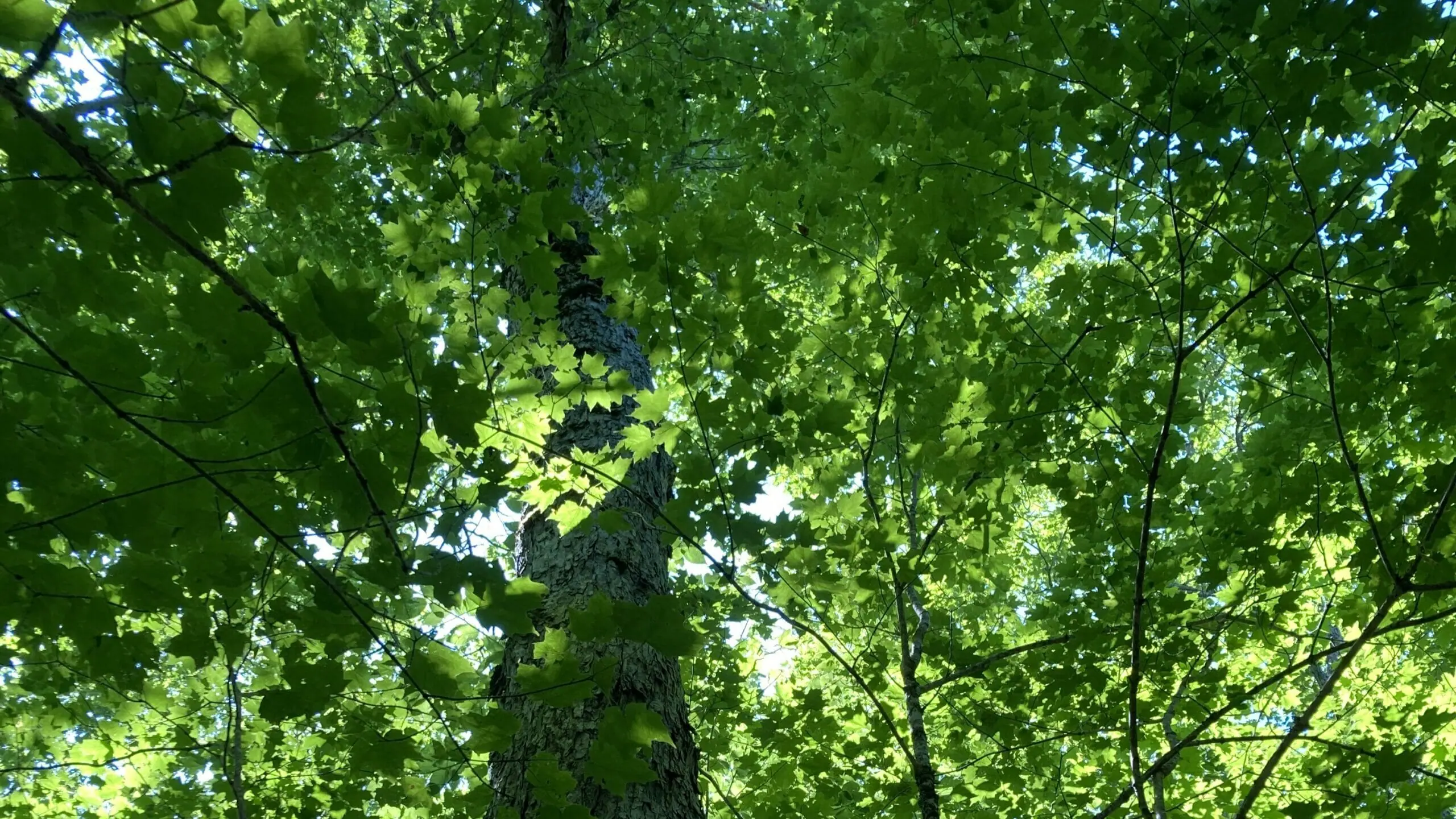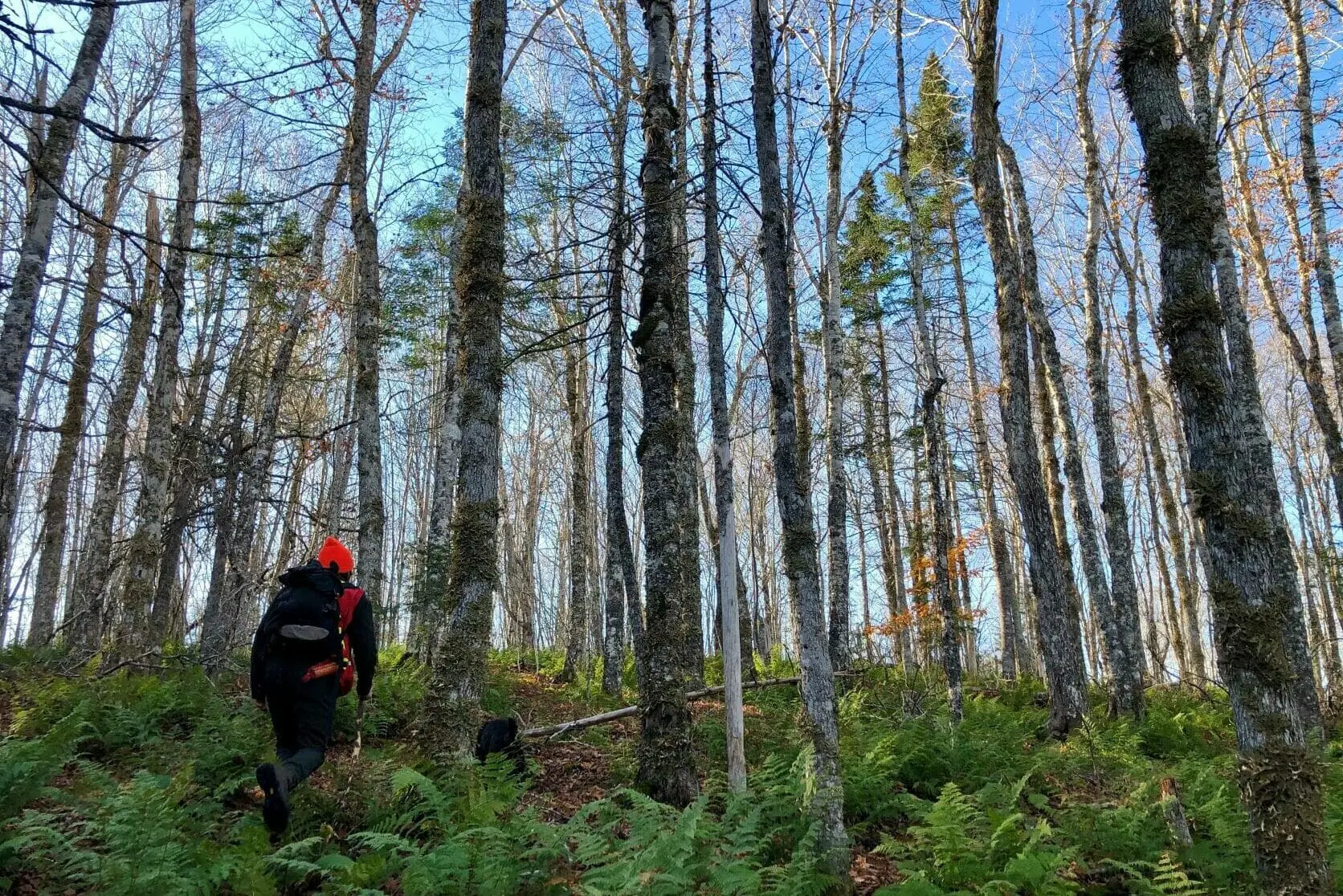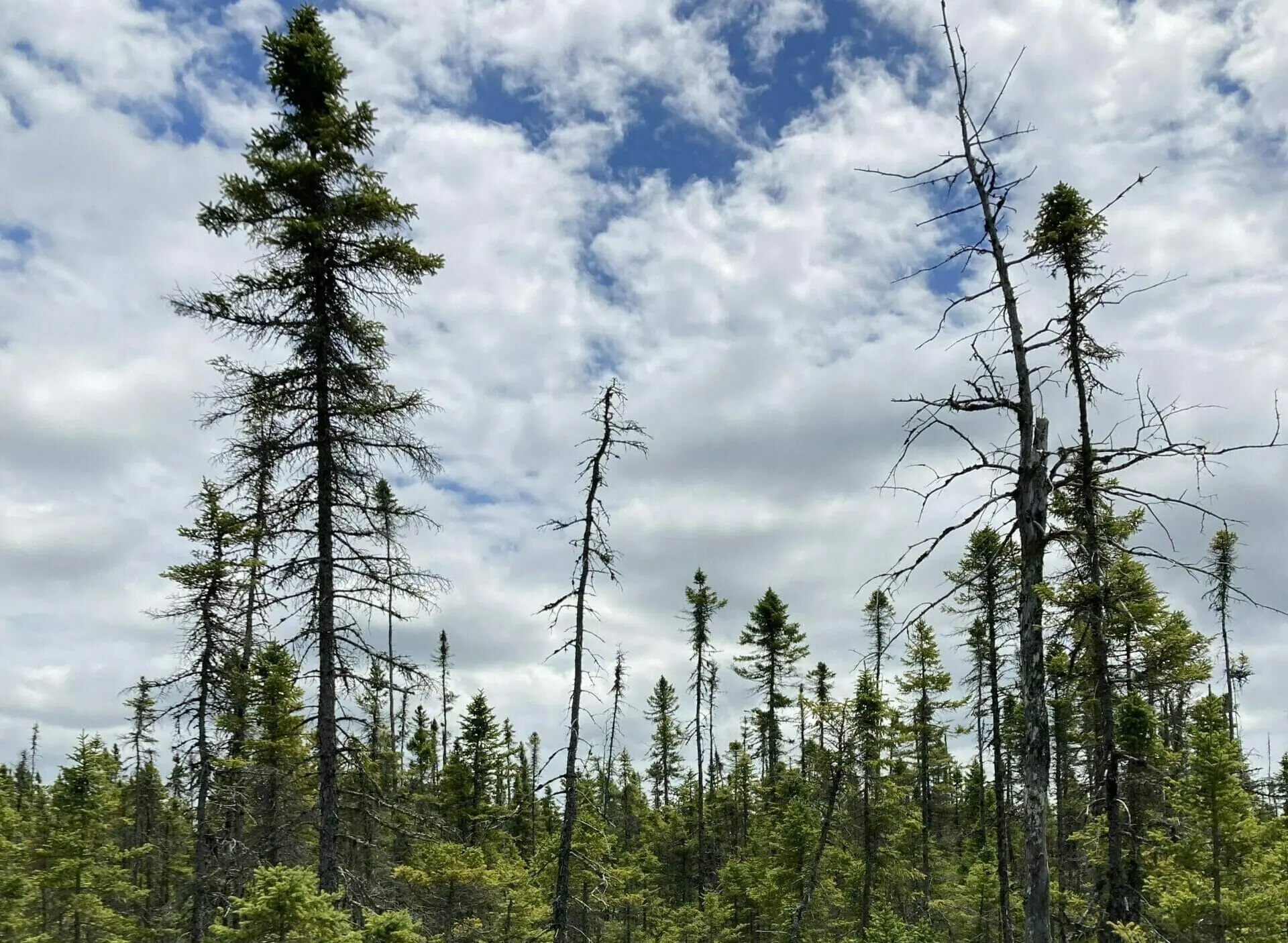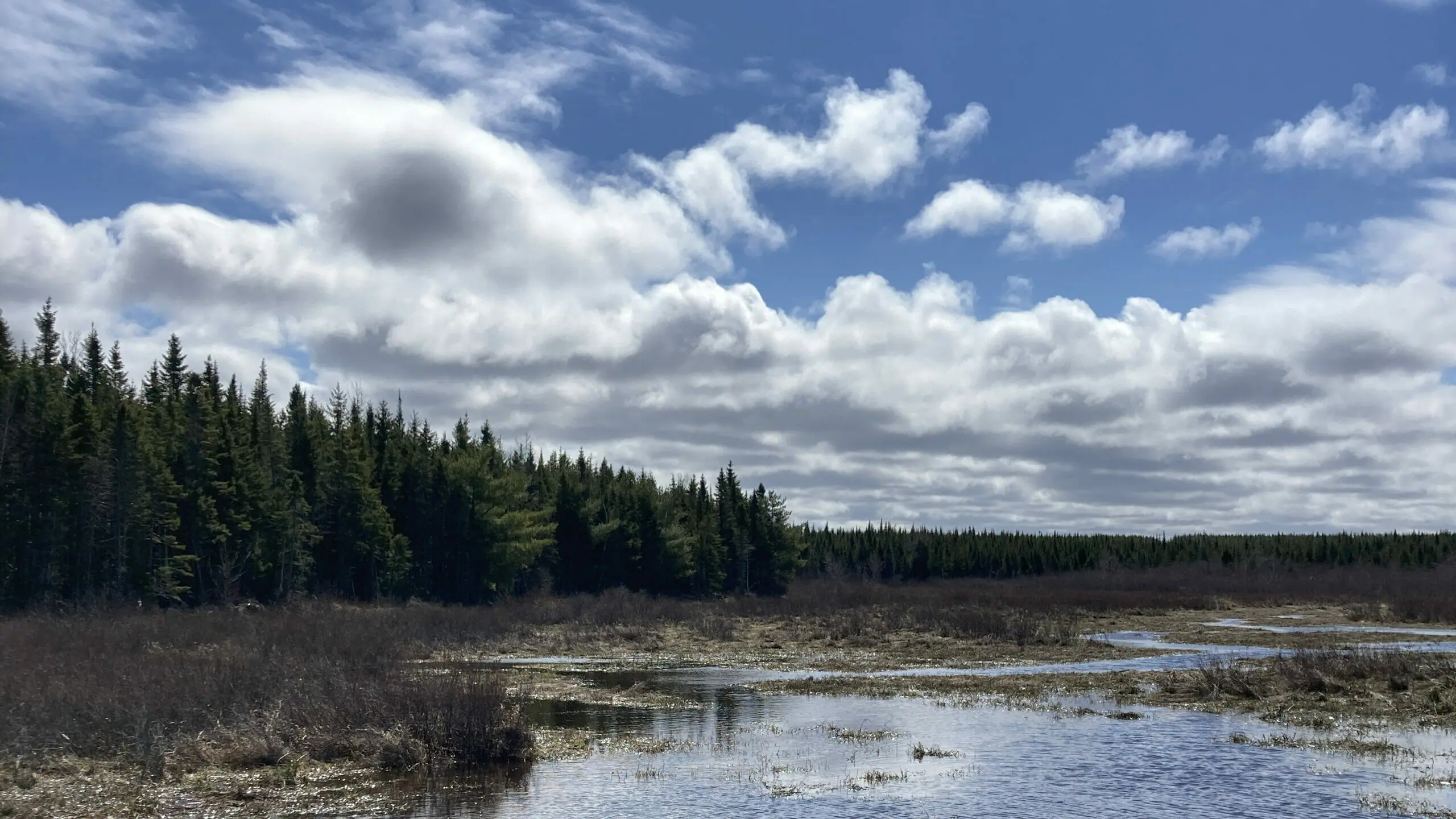Finding Forgotten Forests
By Rebecca Jacobs, Posted on January 30, 2023
If you’ve ever visited or lived in the Maritime Provinces of eastern Canada, you are probably familiar with the Wabanaki Forest. Perhaps you’ve even walked through the woods to immerse yourself in the sights and sounds of life that are part of this special ecosystem.
Yet, most of the forests in this region are not the forests that generations before enjoyed. In fact, only around 5% of the Wabanaki Forest remains in its naturally diverse, pre-colonial condition. Found on steep slopes and in hard-to-access ravines, where the extensive land clearing since colonization could not easily reach, these last refuges have all but been forgotten.
But they are not lost.
These secluded areas provide a window back in time to the Wabanaki Forest’s full potential and are home to stores of biodiversity that could help return the full vibrancy of this forest to the wider landscape. A future with diverse, old forests is possible. With your support, we are on a mission to make it a reality.
In the summer of 2022, Community Forests launched the Forgotten Forest campaign to secure 2,500 acres of forest for restoration and long-term protection. To date, people like you have helped us protect 12 different forests spanning just over 2,519 acres – and we’ve got ambitious plans to secure even more by the end of 2023.
Get to know a few of the Forgotten Forests in two special regions: Unamáki and Sikniktewak.
Unamáki
Also known as Cape Breton Island, Unamáki is home to a number of old hardwood forests. These forests in turn are home to a diversity of life, including many rare or endangered species. To give just one example, Unamáki provides the only habitat in Nova Scotia for the Canada lynx, a species at risk in the province.
Until now, these remaining old forests were protected by their remote locations. Today, however, these forests are at increasing risk of clearcutting as new technologies allow harvesting in previously hard-to-reach areas.
Skye Mountain
In the summer of 2022, Community Forests secured 160 acres of old hardwood forest high up on a mountaintop plateau and located within the Bras d’Or Lakes watershed. Thanks to its age and diversity of flora, many animal, bird, and insect species can be seen and heard within these woods.

Located at the foothills of Skye Mountain, We’koqma’q First Nation is one of five Mi’kmaw communities in Unama’ki. If you’d like to visit the Skye Mountain area, you can learn more here: visitwekoqmaq.ca
MapleCross-Melrose Hill
This property spans 469 acres and includes mixed restoration, mid-succession, and old forest, this forest was our first expansion into Nova Scotia. In areas that had been harvested by previous owners, we planted nearly 80,000 diverse native trees in the fall of 2022. These young trees will help ensure a thriving old forest ecosystem for future generations to enjoy.
Directly bordering this property is an additional 176-acre property of old hardwood forested ravines. A few months after securing the first area of land, Community Forests also successfully conserved this old forest to protect it from risk of clearcutting – expanding the protected area to an amazing 645 acres!

A member of the Community Forests team visiting the newly conserved Melrose Hill forest.
Sikniktewak
Spanning the border between Nova Scotia and New Brunswick, Sikniktewak (or Siknikt region) translates to “drainage area” because of the marshes that make up much of these lands. In the middle of this marsh-covered region, the Chignecto Isthmus is the narrow strip of land bridging Nova Scotia and New Brunswick. Unfortunately, the natural habitats on this land are being increasingly fragmented by infrastructure development, leaving the isthmus at increased risk of climate flooding without forests and wetlands to act as natural flood mitigators. As the only land corridor between Nova Scotia and mainland Canada, the isthmus is vitally important for local communities, wildlife, and nature alike. That’s why Community Forests has been protecting and restoring forests in the region since 2014 – including these new forests!
Shemogue Forest
Secured in late 2022, Community Forest has since planted almost 80,000 native trees to restore the degraded portions of this forest. Trees planted include species like eastern hemlock, red oak, white pine, and red spruce.
A smaller but no less significant section of this property remains intact as a beautiful old black spruce bog. These unique forested wetlands provide habitat to an amazing diversity of plant and animal life.

Shemogue Forest (pronounced shim-oh-gwee), is in Mi’kma’ki, the traditional and unceded territory of the Mi’kmaq First Nations.
Brooklyn Forest
Community Forests secured these 82 acres in December of 2022 – making this one of our most recently conserved forests. This beautiful old mixed forest includes a number of stately red spruce and is located along the famous Trans Canada Trail. What’s more, this new addition is very close to a 400-acre restoration forest that has been in Community Forests’ care since early 2021.
Cormier Village Forest
Cormier Village Forest spans almost 50 acres of intact wetlands and nearly 260 acres of restoration lands. After the first reforestation efforts in 2021, when we planted 80,000 trees in the area, Community Forests returned in the spring of 2022 to plant an additional 141,000 native trees!
With the addition of these three forests, Community Forests International is now protecting nearly 1,400 acres of forest on the isthmus, and we continue to look for opportunities to protect and restore additional lands.

To learn why restoring the forests of the isthmus is so important for people, wildlife, and ecosystems, you can read more here.
The Forgotten Forests campaign continues to be made possible because of the generous support of the MapleCross Fund and support from individuals like you.
If you’d like to help bring back even more of the Forgotten Forests, consider becoming a monthly donor or making a one-time contribution. If you or someone you know is interested in donating or selling land, you can learn more here. However you choose to give, your support today will mean more thriving forests for the future.
